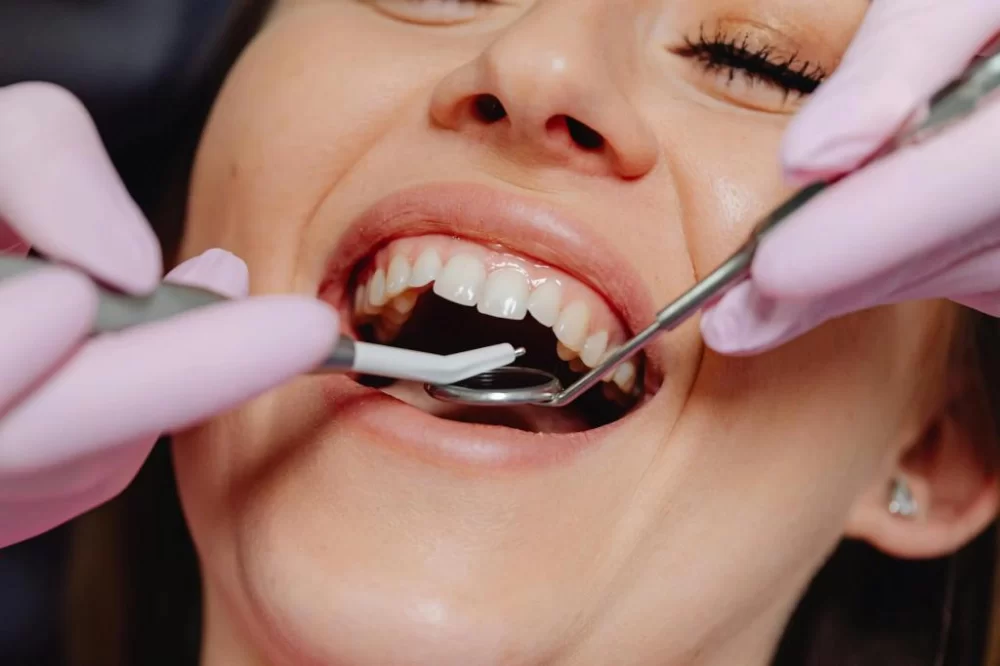
- Recognizing the Signs of Gum Infection
- Early Symptoms and What They Mean
- Causes and Risk Factors for Gum Infections
- When to Seek Professional Dental Care
- Real-Life Experience and Expert Recommendations
1. Recognizing the Signs of Gum Infection
Gum infections are more common than many realize and often begin subtly, making it easy to overlook the early warning signs. Identifying the signs of gum infection early is vital to prevent the progression into more serious periodontal disease, which can lead to tooth loss and systemic health problems. An infection usually starts when bacteria accumulate in the gum pockets due to poor oral hygiene, creating inflammation and irritation.
Common indicators include persistent gum bleeding, swelling, and tenderness. However, these signs can easily be mistaken for minor irritation or sensitivity. That’s why paying attention to subtle changes in your gum health can make a huge difference.
1.1 Common Signs to Watch Out For
The most frequent signs of gum infection include red, swollen gums that bleed during brushing or flossing. You might also notice bad breath that doesn’t improve with routine oral care, gum recession exposing more tooth surface, or the presence of pus around the gums indicating active infection. Discomfort while chewing or a persistent bad taste in the mouth can also signal trouble.
1.2 Understanding the Progression of Gum Infection
Early gum infections, if untreated, can evolve from gingivitis to periodontitis, where the infection damages the supporting structures of the teeth. This progression underscores why recognizing early signs is so important. At advanced stages, you may experience loose teeth, deeper gum pockets, and even bone loss visible in dental X-rays.
2. Early Symptoms and What They Mean
Not all symptoms carry the same urgency, but understanding what each sign means can guide timely action.
2.1 Bleeding Gums: A Warning Signal
Bleeding during brushing or flossing is often the first sign of gum infection. While occasional bleeding might not be alarming, consistent bleeding indicates ongoing inflammation. It means the gums are irritated and the body is reacting to bacterial presence.
2.2 Gum Sensitivity and Pain
Sensitivity or mild pain around the gums can be subtle but should not be ignored. Pain may increase when pressure is applied, such as during eating, signaling that infection may be affecting deeper tissues.
2.3 Changes in Gum Appearance
Healthy gums are usually firm and pale pink. When infection sets in, gums become redder, puffier, and sometimes shiny due to inflammation. These visual changes are early red flags of infection and inflammation.
3. Causes and Risk Factors for Gum Infections
Gum infections are caused by the overgrowth of harmful bacteria in the mouth, which thrive in plaque and tartar buildup. However, certain factors increase vulnerability.
3.1 Poor Oral Hygiene
Inadequate brushing and flossing allow plaque to accumulate, providing a breeding ground for bacteria. This is the most common cause of gum infection.
3.2 Smoking and Tobacco Use
Tobacco reduces blood flow to the gums, impairing healing and immune response, making infections more likely and harder to treat.
3.3 Medical Conditions and Medications
Diabetes, hormonal changes (such as during pregnancy), and some medications can increase susceptibility to gum infections by weakening immune defenses or altering oral environments.
4. When to Seek Professional Dental Care
Knowing when to visit a dentist can save your smile and overall health. If you notice persistent signs of gum infection—such as ongoing bleeding, swelling, or pain—it’s essential to seek professional evaluation.
Dentists can perform deep cleanings, prescribe antibiotics if necessary, and recommend personalized oral care routines. Early intervention often leads to quick resolution and prevents complications.
5. Real-Life Experience and Expert Recommendations
Take the case of Mark, who ignored mild gum bleeding for months. Eventually, he developed significant discomfort and loose teeth. After consulting his dentist, he underwent treatment including scaling and root planing, which halted the infection and restored his oral health. Mark’s story highlights the importance of recognizing signs early and acting promptly.
Dental professionals stress that regular dental visits combined with attentive personal care are the best defense against gum infections. For those seeking the most suitable oral health products and trusted advice, Dentistry Toothtruth provides comprehensive recommendations tailored to individual needs, ensuring effective prevention and care.







 Ossen Stephen M DDS5.0 (4 review)
Ossen Stephen M DDS5.0 (4 review) Tacoma Endodontic Studio4.0 (243 review)
Tacoma Endodontic Studio4.0 (243 review) Daniel Jeffrey Cohen, DDS5.0 (117 review)
Daniel Jeffrey Cohen, DDS5.0 (117 review) Silc Periodontics4.0 (169 review)
Silc Periodontics4.0 (169 review) Dr. Michael P. Rutz, DMD5.0 (22 review)
Dr. Michael P. Rutz, DMD5.0 (22 review) Seung H. Baek, DDS, Inc.4.0 (19 review)
Seung H. Baek, DDS, Inc.4.0 (19 review) The Importance of Oral Health Education During Pregnancy for a Healthy Pregnancy
The Importance of Oral Health Education During Pregnancy for a Healthy Pregnancy Best Tips for Brushing Your Teeth Properly for Healthy Gums: Essential Techniques for Oral Health
Best Tips for Brushing Your Teeth Properly for Healthy Gums: Essential Techniques for Oral Health Why Skipping Dental Checkups Can Lead to Bigger Oral Health Problems
Why Skipping Dental Checkups Can Lead to Bigger Oral Health Problems Advantages of Porcelain Dental Restorations
Advantages of Porcelain Dental Restorations How Can Diabetes Cause Tooth and Gum Problems? Preventing and Managing Oral Health Issues
How Can Diabetes Cause Tooth and Gum Problems? Preventing and Managing Oral Health Issues Healthy Habits for Promoting Good Oral Health and Hygiene: Tips for a Healthy Smile
Healthy Habits for Promoting Good Oral Health and Hygiene: Tips for a Healthy Smile